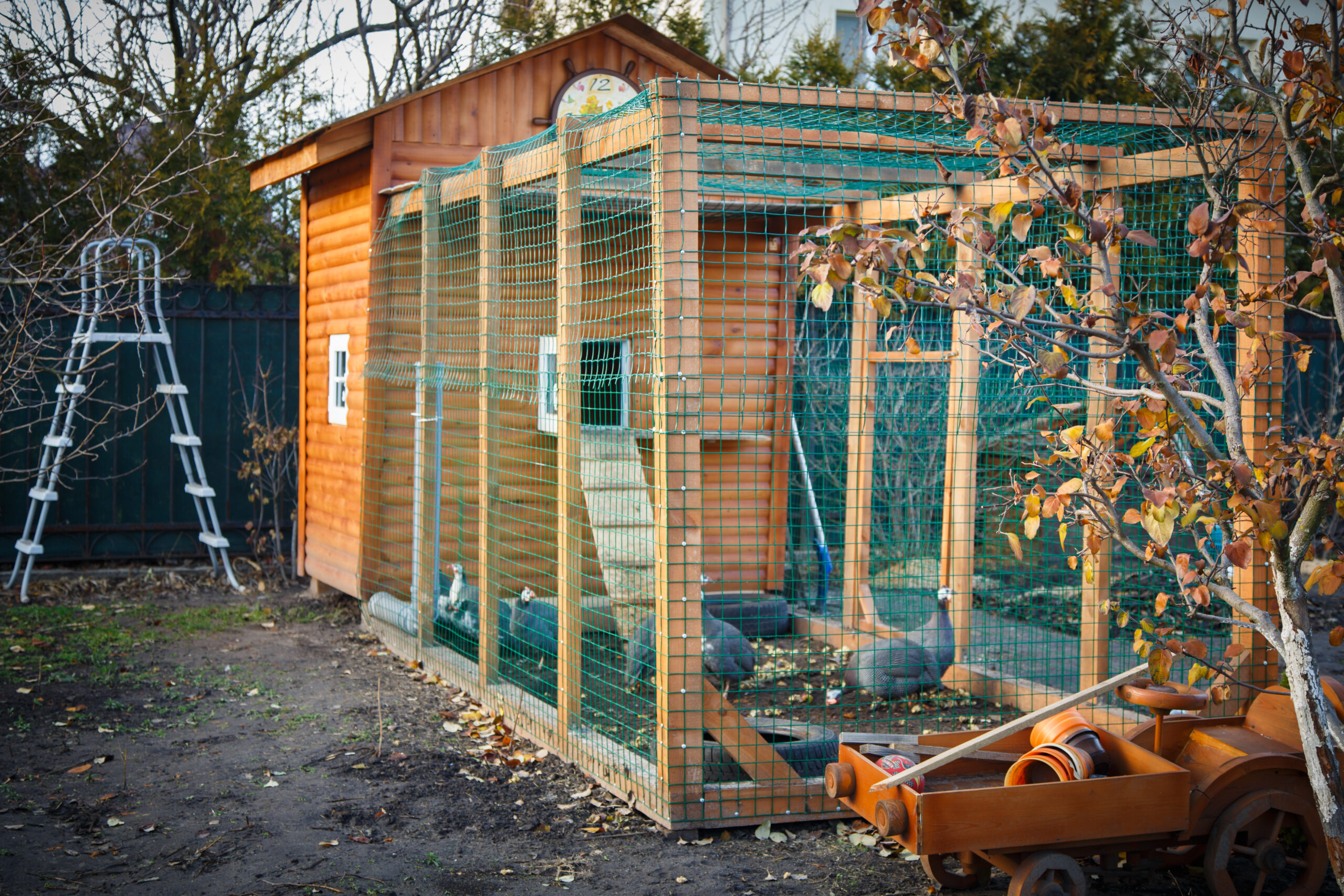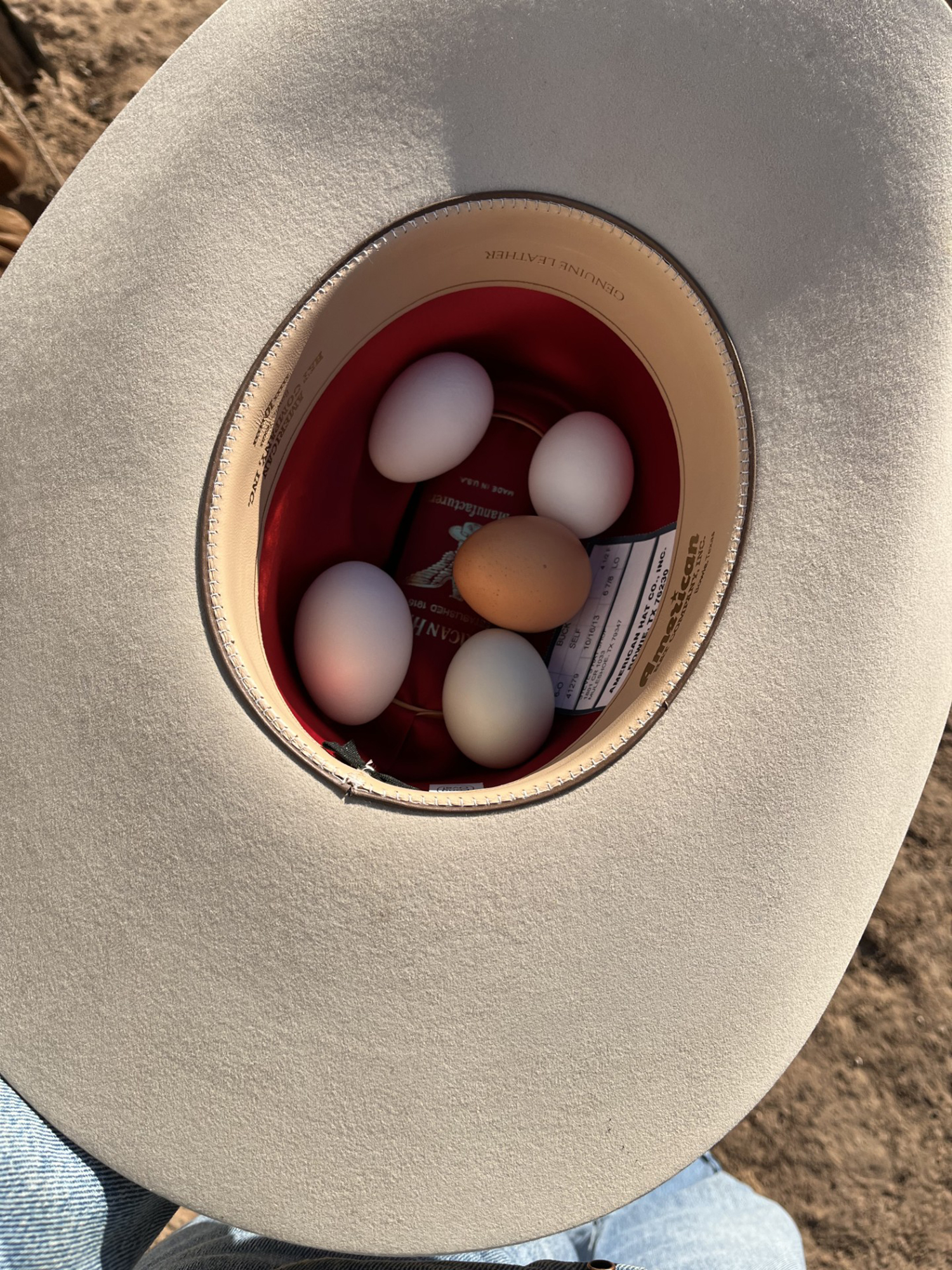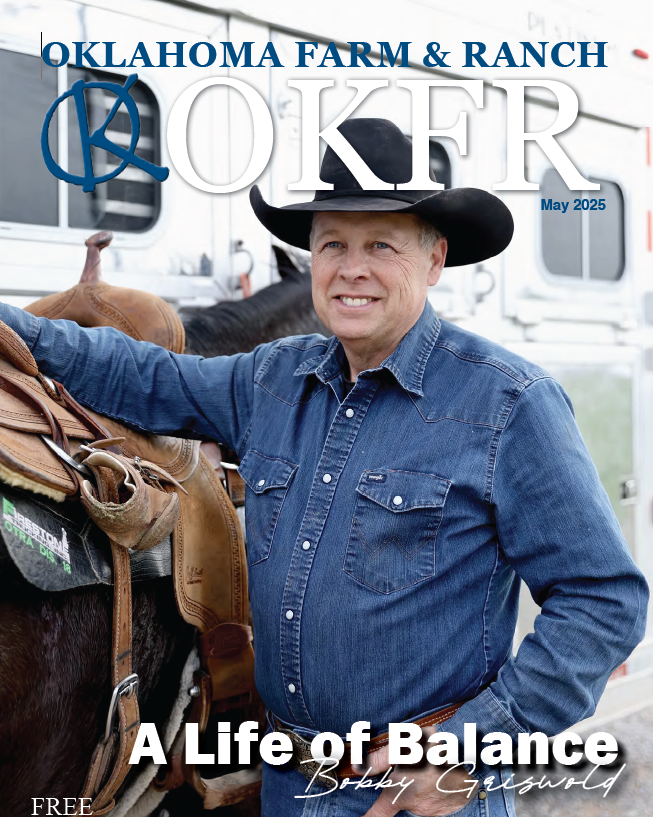Country Lifestyle
Raising Chickens for Beginners: A Step-by-Step Guide

Raising chickens can be a rewarding and fulfilling experience, whether you’re a homesteader looking to become more self-sufficient or a backyard enthusiast seeking fresh eggs for your family. Chickens are relatively low-maintenance animals, making them an excellent choice for beginners in the world of poultry farming. In this step-by-step guide, we will walk you through the essentials of raising chickens, from choosing the right breed to ensuring their health and happiness.
Selecting the Right Breed
Before diving into chicken-raising, it’s crucial to choose the right breed that suits your goals and environment. Different breeds have various characteristics, including egg-laying capacity, temperament, and adaptability. Here are some popular options for beginners:
Rhode Island Red: Known for their excellent egg production and hardiness.
Plymouth Rock: Friendly birds that lay brown eggs and adapt well to various climates.
Australorp: Record-holders for egg-laying, known for their docile nature.
Silkies: Unique and fluffy birds often kept as pets; they lay smaller eggs but are adorable companions.
Research the specific breeds available in your area and consider factors like climate and available space when making your selection.
Coop and Run Setup
Before bringing your chickens home, you’ll need to set up a safe and comfortable living space for them. A coop and run are essential components of your chicken-keeping setup:
Coop: The coop is where your chickens will sleep at night and lay their eggs. It should be well-insulated, predator-proof, and provide at least two to three square feet of space per chicken.
Run: The run is an outdoor area where your chickens can roam during the day. It should be fenced and covered to protect your birds from predators and provide shade.
Make sure to include roosting bars, nesting boxes, and adequate ventilation in your coop for a healthy environment.
Feeding Your Chickens
Chickens need a balanced diet to stay healthy and lay eggs regularly. You can feed them commercial chicken feed, which comes in various forms:
Starter Feed: For chicks up to six weeks old.
Grower Feed: For chicks aged six weeks to 20 weeks.
Layer Feed: For hens producing eggs.
Additionally, you can supplement their diet with kitchen scraps, vegetables, and grains. Ensure they have access to clean, fresh water at all times.
Care and Health
Regular care and monitoring are essential to keeping your chickens healthy. Here are some key aspects of chicken care:
Regular Health Checks: Inspect your chickens for signs of illness or injury daily. Common issues include mites, respiratory infections, and injuries from pecking.
Disease Prevention: Vaccinate your chickens against common diseases to keep your flock healthy.
Egg Collection: Collect eggs daily to ensure they remain clean and prevent hens from brooding.
Clean Coop: Regularly clean the coop to prevent the buildup of waste and odors, which can attract pests.
Handling and Socializing
Chickens can be friendly and enjoy human interaction when handled gently. Spend time with your chickens, hand-feeding them treats to build trust. Avoid sudden movements or loud noises, which can startle them.
Understanding Egg Production
Egg production varies by breed and age. Hens typically start laying eggs at around 5-6 months old. The amount of daylight, diet, and stress can affect egg production. You can use artificial lighting to simulate longer daylight hours, which can encourage consistent egg-laying.
Dealing with Challenges
Chickens, like any animal, come with their challenges. Here are a few common issues and how to address them:
Predators: Invest in a secure coop and run, and consider adding motion-activated lights or alarms to deter nighttime predators.
Broodiness: Some hens may become broody and stop laying eggs. You can break this behavior by isolating them in a separate enclosure or providing them with dummy eggs to sit on.
Feather Pecking: Chickens can sometimes develop a habit of pecking at each other’s feathers. Ensure they have enough space and distractions to prevent this behavior.
Raising chickens can be a delightful and educational journey. By selecting the right breed, setting up a proper coop and run, providing a balanced diet, and offering care and attention, you can enjoy the rewards of fresh eggs and the companionship of these feathered friends. Remember that every chicken has its unique personality, so get ready to be charmed by your new flock as you embark on this fulfilling adventure in poultry farming. Happy chicken-keeping!
Country Lifestyle
Farm Dogs & Table Scraps

What’s Safe and What’s Not?
Growing up on a farm, our dogs were tough. They roamed the pastures, slept under the barn, and ate just about anything they could get their paws on—whether we meant for them to or not. I’ll admit, I never thought twice when one of our old cow dogs snatched a biscuit off the table or licked up a spill from the barn floor. I’ve even seen a dog steal a whole rib bone off a plate and trot off like he’d won the lottery. And somehow, they always seemed fine.
But here’s the thing—just because they survived doesn’t mean it was safe. For every farm dog that lucked out, there’s another that wasn’t so fortunate. Some human foods can be downright toxic to dogs, and a little bit of bad luck (or a smaller, more sensitive dog) can turn a harmless snack into an emergency.
Common toxic foods lying around the farmhouse
If you’ve got a farm dog—or any dog, really—you need to be aware of the dangers lurking in everyday foods. Some of the biggest culprits include:
Chocolate – The darker it is, the worse it is. Even a little can cause vomiting, seizures, or worse.
Grapes & Raisins – No one’s exactly sure why, but they can cause kidney failure fast.
Onions & Garlic – In large enough amounts, these can destroy red blood cells, leading to anemia.
Xylitol (Found in Sugar-Free Gum & Candy) – This artificial sweetener can send a dog’s blood sugar crashing and cause liver failure.
Alcohol – Even small amounts can be deadly to dogs, affecting their nervous system much more than it does ours.
Bones from Cooked Meat – While not necessarily toxic, they can splinter and cause serious internal injuries.
Macadamia Nuts – These can lead to weakness, vomiting, and even paralysis in dogs.
What to do if your dog eats something toxic
First, don’t panic—but don’t ignore it either. If you know your dog ate something dangerous, call your vet immediately. They can tell you whether to induce vomiting or if it’s something that requires urgent care. If it’s after hours, contact the ASPCA Animal Poison Control Center (888-426-4435) or the Pet Poison Helpline (855-764-7661).
Prevention is always the best medicine, so keep toxic foods out of reach. That might mean keeping the trash can secured, making sure kids don’t slip the dog a treat under the table, or just being more mindful of what’s left on the counter.
Our farm dogs might have been lucky, but luck isn’t a great strategy when it comes to their health. A little awareness goes a long way in making sure they stay happy, healthy, and ready for the next day’s work.
For more information
ASPCA Animal Poison Control: www.aspca.org/pet-care/animal-poison-control
Pet Poison Helpline: www.petpoisonhelpline.com
Visit www.akc.org/expert-advice/nutrition/foods-your-dog-should-never-eat
Country Lifestyle
Summer Squash and Corn Chowder

By Lacey Vilhauer
Total time: 40 minutes
Servings: 6-7
Ingredients
- 6 slices bacon, cooked and crumbled and 1 1/2 Tbsp rendered bacon fat reserved
- 1 1/2 lbs yellow squash, chopped (about 3 medium)
- 2/3 cup thinly sliced celery
- 1 cup diced onion
- 1 Tbsp flour
- 2 cloves garlic, minced
- 2 3/4 cup milk (I used 1%)
- 5 cups canned or fresh cut corn (from about 6 ears corn), divided
- 1/2 cup heavy cream
- 1 1/2 tsp chopped fresh thyme (or 1/2 tsp dried)
- 3/4 tsp salt, then more to taste
- 1/4 tsp freshly ground black pepper, then more to taste if desired
- 3/4 cup shredded cheddar cheese, for serving
- Chopped green onion for garnish (optional)
Instructions
Heat 4 tsp reserved bacon fat in a large pot over medium-high heat. Add celery and onion and sauté 2 minutes then add the squash.
Saute until tender, about 6 minutes, adding in garlic and flour during last 2 minutes of sauteing. Reduce heat slightly.
Add 1 1/2 cups milk, 2 cups of the corn, thyme, salt and pepper to the sauteed veggies.
To a blender add remaining 3 cups of corn, remaining 1 1/4 cups milk and the cream. Process in blender until nearly smooth (about 30 seconds).
Add pureed mixture to pot and stir to blend. Cook until mixture reaches a light boil.
Serve warm with shredded cheese, crumbled bacon and sliced green onions if desired.
Country Lifestyle
Western Housewives – May 2025

By Summer McMillen
All my married life I have thought that when husbands all got together horseback after a hard days work they were probably rating their wives on a scale from one to ten based on their various capabilities. Did Wife A have a good hat crease? Was Wife B good help in the branding pen? Was Wife C an excellent mother? Was Wife D hospitable to everyone? Could Wife E make a decent gallon of sweet tea? Did Wife F keep a tidy saddle house?
Presumably, when Wife B did not live up to Wife A there was a fist fight followed by wife shaming of Husband B. His status amongst the cowboys immediately fell and he would be behind for the rest of his life in his cowboy career.
He would come home ashamed his wife couldn’t flambé a decent bananas foster and she couldn’t hoolihan either. He would be distraught and said wife would feel his pain.
Of course, this never happened to me like I thought it would. My husband always came home with a smile on his face and I’m pretty sure “flambé” isn’t even in a cowboys vocabulary.
Nonetheless, these imaginary fights and social rankings have plagued my brain for years. It has caused me to always be in competition with myself to be the very best at everything I did. Which I have eventually realized is a trait of women all around the world.
While we are cooking a four course meal for our families we start to think about how we actually should be practicing heading steers instead.
While we are practicing our horsemanship we start to think about how we should actually be preparing a nutritious and elaborate meal for our families.
It is a constant battle that women have created and proceeded to fight for centuries.
One day the inner battle got to me and I finally broke down as we were riding wheat pasture and confessed to my husband my guilt. I was so sorry that I wasn’t a better cowgirl. I was so sorry that the house was a mess. I was so sorry that I would never be on The Cowboy Channel. I was so sorry that I had lost his good pair of gloves. (Except I didn’t actually mean to confess that last part. Some things are just better left unknown.) I apologized again and again and told him I was sorry and he probably never wanted to bring his friends over for supper ever again.
Instead of consoling me, he just started looking at me like I was crazy. Which is what all good husbands do.
He stopped his horse and looked at me and said “Do you know how cowboys rate each other’s ranch wives?”
So many thoughts started filling my brain. Was it looks? Gentleness? Laundry speed? Work ethic?
Then he revealed their secret. “Cowboys rate each other’s wives by how well they can cook eggs for breakfast.”
His point of course, was that men don’t think about each other’s wives. As long as they get their eggs for breakfast. In another twist of irony, my husband taught me how to fry the perfect egg. What can I say? It’s a man’s world.
Since then, I have let go of my irrational fears and doubt and have simply been living life. It’s all anyone can do. I may not team rope the best. I may get my fingers when I’m trying to dally and I may not have the tidiest saddle house. But I try hard at everything I do and I do it all out of love for my family and finally, myself.
So, if you’re a woman this Mother’s Day and you catch yourself feeling down amongst life constant pressures just remember you are not alone. You can almost guarantee there is a woman in every household that needs a little pick me up. Maybe you should just go outside. Maybe you should sit down and count your blessings. Or, maybe you should have your husband fry you some eggs.
-

 Attractions8 years ago
Attractions8 years ago48 Hours in Atoka Remembered
-

 Country Lifestyle8 months ago
Country Lifestyle8 months agoJuly 2017 Profile: J.W. Hart
-

 Country Lifestyle9 years ago
Country Lifestyle9 years agoThe House a Treasure Built
-

 Country Lifestyle3 years ago
Country Lifestyle3 years agoThe Two Sides of Colten Jesse
-

 Outdoors7 years ago
Outdoors7 years agoGrazing Oklahoma: Honey Locust
-

 Equine8 years ago
Equine8 years agoUmbilical Hernia
-

 Outdoors5 years ago
Outdoors5 years agoPecan Production Information: Online Resources for Growers
-

 Farm & Ranch7 years ago
Farm & Ranch7 years agoHackberry (Celtis spp.)





